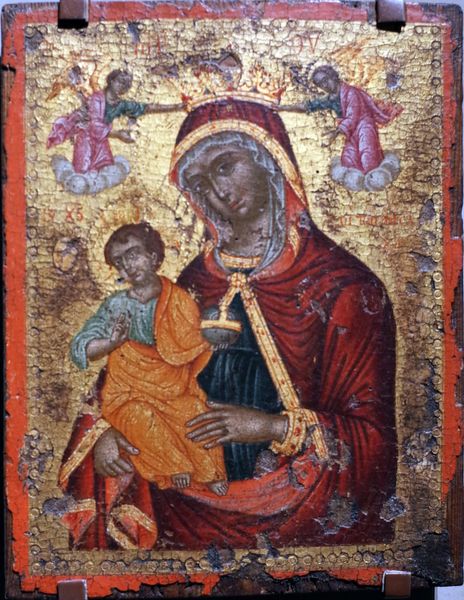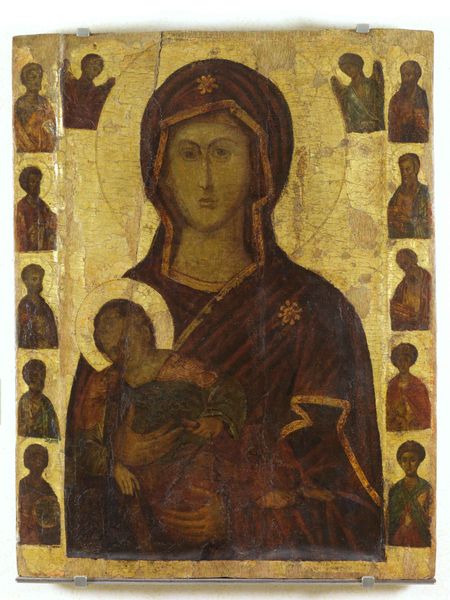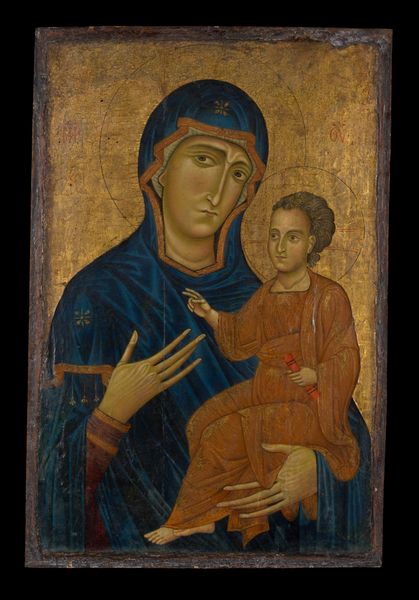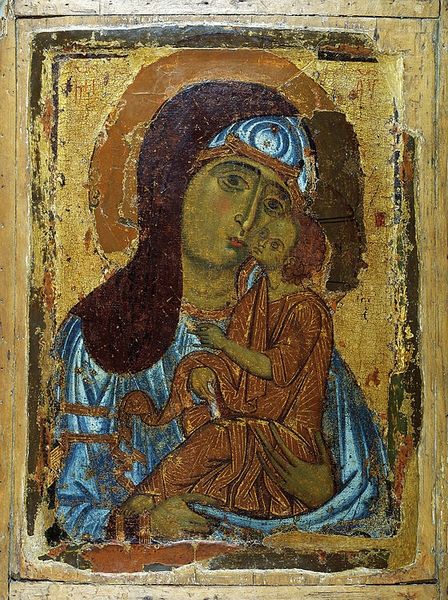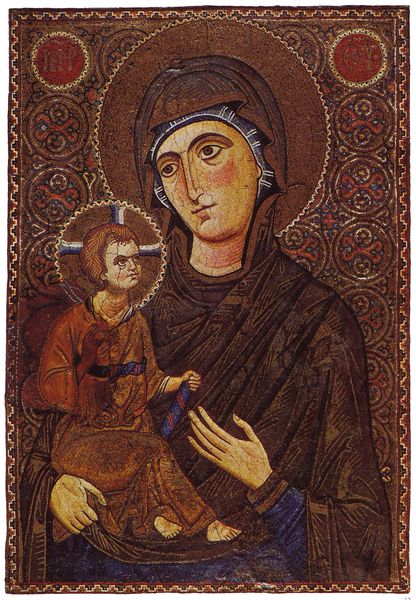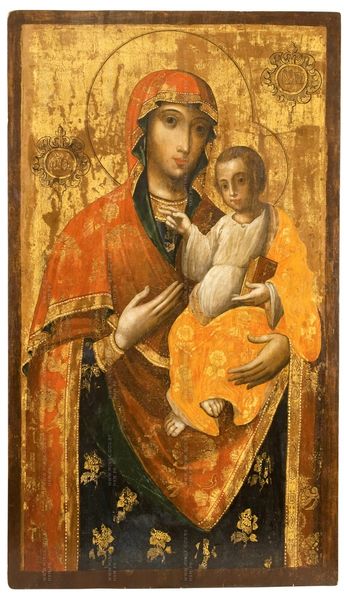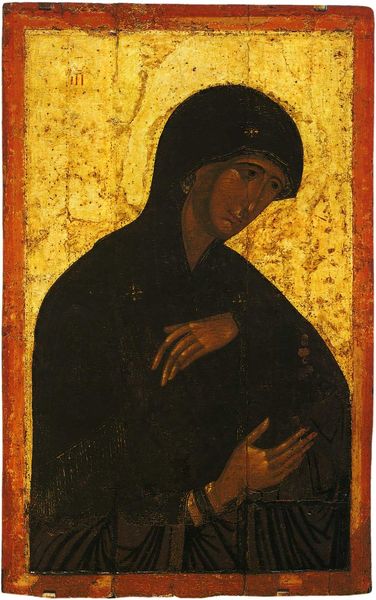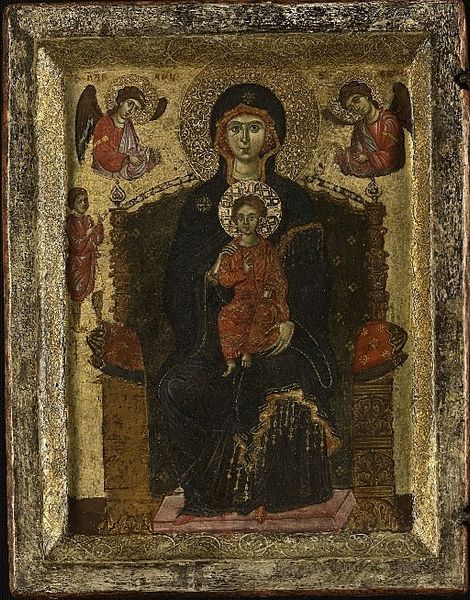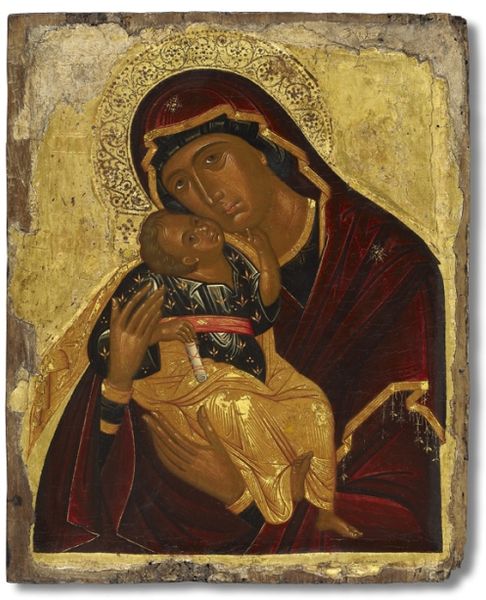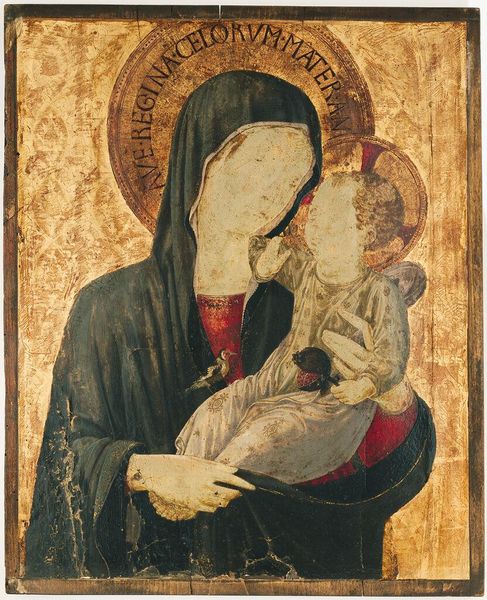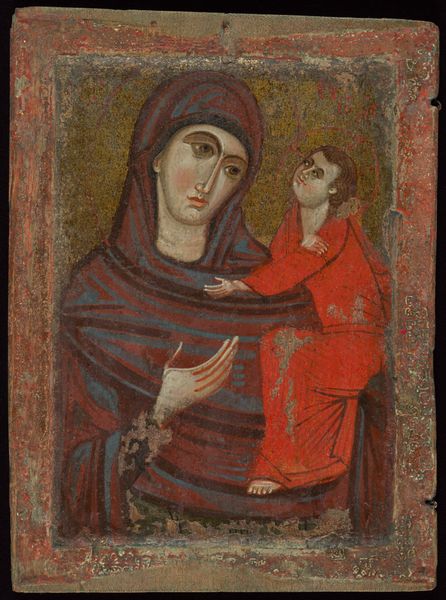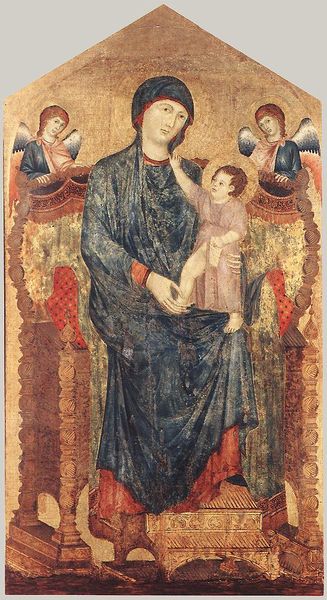
mosaic, gold
#
portrait
#
mosaic
#
byzantine-art
#
medieval
#
gold
#
figuration
Copyright: Orthodox Icons,Fair Use
Editor: Here we have the "Episkepsis Glykophilousa," a mosaic icon from around 1300. Looking at the piece, I am immediately struck by the texture. It is all these tiny, hand-placed tesserae that form this tender image. What can you tell me about this choice of medium? Curator: Well, let's think about what mosaic signifies here, beyond just being a pretty image. The act of its creation, each individual piece being carefully placed, becomes a form of devotion and labor. Considering the cost of materials like gold, we need to think of who commissioned this and the value placed on the image. It signifies power and prestige through material wealth and the extensive labor required for its construction. What effect does this process and choice of material have on the viewer, do you think? Editor: It does give the piece a sense of permanence. Like this image will exist forever and always remind us of something holy. Given the religious context, were particular artisans sought for this laborious task? Curator: Exactly! Who do you imagine were the people actually involved in creating it? Think beyond just a single “artist.” We're talking about skilled laborers, probably working under very specific conditions. Each contributing to this powerful display of wealth and religious devotion. How does that labor then impact our interpretation of the image itself? Editor: It humanizes the image for me, knowing all the hands and hours that went into it. I see beyond just the divine figures represented and consider the cultural and societal elements. This piece illustrates labor and reverence together. Thank you. Curator: Indeed! By focusing on materiality and the processes of its creation, we reveal fascinating social layers embedded within the artwork.
Comments
No comments
Be the first to comment and join the conversation on the ultimate creative platform.
